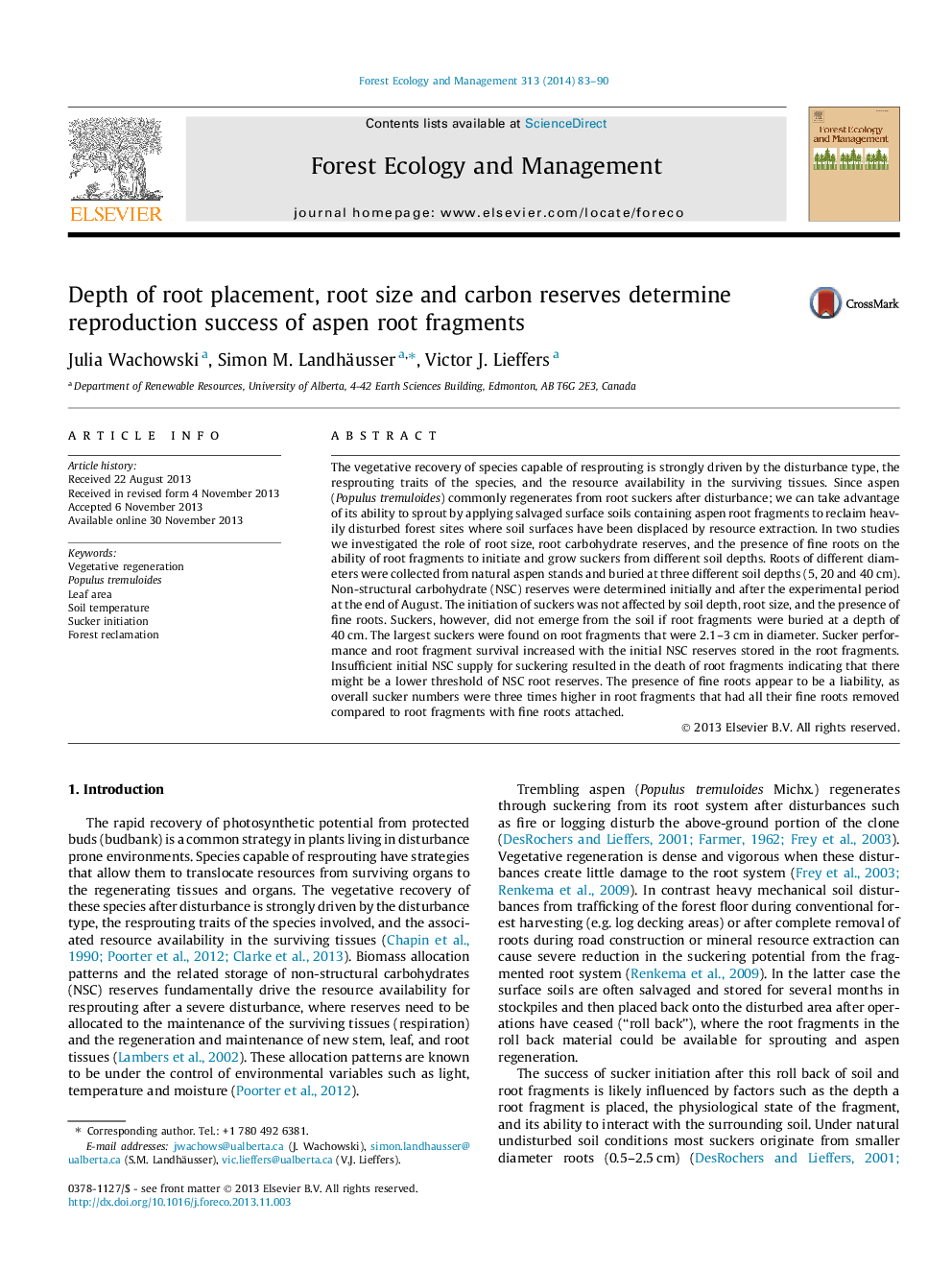| Article ID | Journal | Published Year | Pages | File Type |
|---|---|---|---|---|
| 86582 | Forest Ecology and Management | 2014 | 8 Pages |
•Aspen root fragments of different sizes were buried at different soil depths.•Sucker initiation was not affected by soil depth, root size, or presence of fine roots.•Initial fragment carbohydrate reserves affected sucker growth and fragment survival.•Suckers did not emerge above ground at burial depth of 40 cm.
The vegetative recovery of species capable of resprouting is strongly driven by the disturbance type, the resprouting traits of the species, and the resource availability in the surviving tissues. Since aspen (Populus tremuloides) commonly regenerates from root suckers after disturbance; we can take advantage of its ability to sprout by applying salvaged surface soils containing aspen root fragments to reclaim heavily disturbed forest sites where soil surfaces have been displaced by resource extraction. In two studies we investigated the role of root size, root carbohydrate reserves, and the presence of fine roots on the ability of root fragments to initiate and grow suckers from different soil depths. Roots of different diameters were collected from natural aspen stands and buried at three different soil depths (5, 20 and 40 cm). Non-structural carbohydrate (NSC) reserves were determined initially and after the experimental period at the end of August. The initiation of suckers was not affected by soil depth, root size, and the presence of fine roots. Suckers, however, did not emerge from the soil if root fragments were buried at a depth of 40 cm. The largest suckers were found on root fragments that were 2.1–3 cm in diameter. Sucker performance and root fragment survival increased with the initial NSC reserves stored in the root fragments. Insufficient initial NSC supply for suckering resulted in the death of root fragments indicating that there might be a lower threshold of NSC root reserves. The presence of fine roots appear to be a liability, as overall sucker numbers were three times higher in root fragments that had all their fine roots removed compared to root fragments with fine roots attached.
